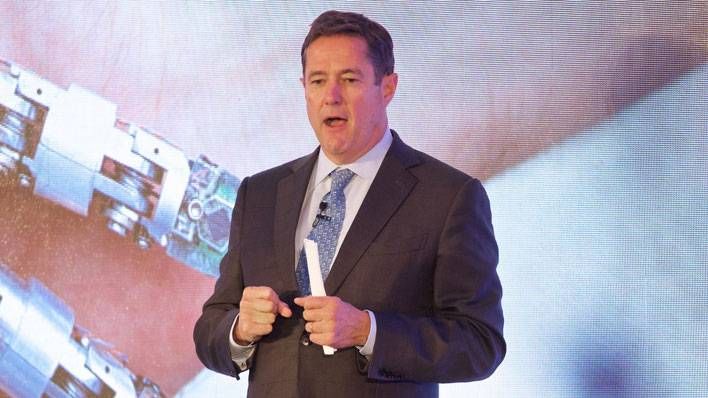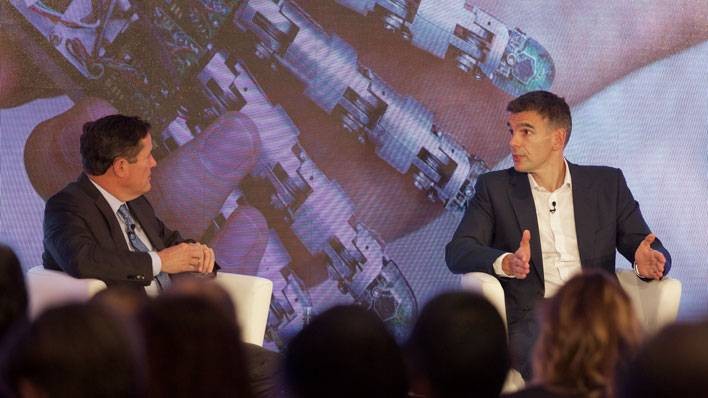
Eight essential insights from the Barclays Digital Conference
As leading figures in banking and technology shared their views on the future of finance, we were there to capture some of the thought-provoking highlights from the day.

The bank’s Group Chief Executive, Jes Staley, looked at the vital relationship between banking and technology in a speech at the Barclays Digital Conference 2016.
In many ways, Barclays is a technology company with a balance sheet and regulators. Roughly 30% of the GDP of the United Kingdom goes through our payments system every day. So having the right technology in place is a critical obligation that Barclays has towards the United Kingdom. Our back office system has to function if the nation’s economy is to function.
In many ways, Barclays is a technology company with a balance sheet and regulators.
Barclays CEO
That’s a responsibility that is key for us, and it’s also a place where regulators are tremendously involved. I do think that one of the things that has happened with the large banks is – to a certain extent – they lost control where technology overwhelmed the core operations and core platforms of the industry.
To give you one example on the wholesale side: we have literally thousands of models inside Barclays that run our investment bank. The way those models were built, you get an options trader who joins the bank and they want to start trading in certain types of options and they call up the technologist. They say: “Can you build this type of spreadsheet using this option pricing model and this data feed.” And for 20 years the technologist’s responsibility was to say: “Absolutely, we’ll get it done as quickly as we can.” And all of a sudden you wake up one day and Barclays has got thousands of models managing our investment bank, none of which talk to each other. None of which are consistent users of data. None of which give responses which are consistent across the entire banking platform.
In the new world, which we’ve implemented, you have the technologists call up the traders and say: “You know that option pricing model you’re using and that spreadsheet? It’s got a different model than our risk group and the data feed comes from somewhere else, so we’re shutting that down next week.” You have to turn on its head where the authority lies in a bank between your core operations and your technologists. So technology is a huge deal for us.
Full circle
This is our third time doing this conference and getting this sort of turnout from our customers, our clients, our vendors and our partners is terrific for Barclays.
I joined almost a year ago, and one of the first things you do when you come into a situation like that is you sit down with the management team. You bring them in one at a time and try to get an idea of what their view or vision is about Barclays, what their experience is and what are the challenges that we face as a bank. Early on in that process I asked this guy named Ashok Vaswani, CEO, Barclays UK, to come by, and he did, and all of a sudden after about 10 minutes I realised I was facing a tornado: this was an individual who has a passion around what Barclays can do, with its consumers and with technology, that I had never seen in the industry before. He believes deeply in what this conference is about and he believes deeply in where Barclays is going to go with technology.
One of the things Ashok described early on to me was the Rise programme. We now have Rise facilities from London to New York to Manchester to Mumbai to Tel Aviv, and we’ve helped 10,000 tech start-up companies get their feet on the ground. It culminated a couple of weeks ago when we were the first bank in the world to actually execute trade financing using blockchain technology. First time. First bank.
The fascinating part for me was that the blockchain technology used to do that trade financing was developed by a company called Wave, which was one of the companies in the Rise programme. And that just shows the connectivity: we have the historical practice of a bank facilitating trade financing, but using the technology of a company that’s a start-up, and that company started in a facility managed by Barclays to allow start-ups to thrive. That’s really going full circle and speaks a lot to where Barclays can go.

As leading figures in banking and technology shared their views on the future of finance, we were there to capture some of the thought-provoking highlights from the day.

The third annual Barclays conference devoted to developments in digital saw more than 300 people gather in London to hear industry leaders speak on a range of topics from Artificial Intelligence (AI) to cybersecurity.
